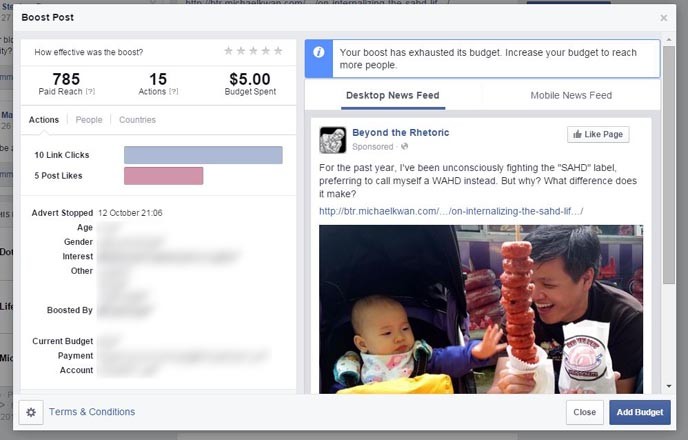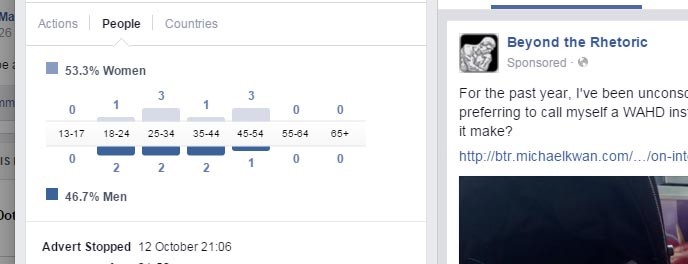Social media has been a great democratizing factor in today’s Internet, because everyone can have a voice and everyone has an opportunity to be heard. Without spending a penny, you can theoretically reach thousands, millions or even billions of people around the world… except you sort of can’t. Ever since Facebook destroyed the organic reach of business pages, it’s become much more of a pay-to-play kind of scenario.
And that’s the thing. As tough a pill as that may be to swallow, Facebook has every right to do pretty well whatever it wants and you really can’t blame Mark Zuckerberg and his team for wanting to get in on their own action. And if you want to use the “free” service of Facebook, you have to be willing to play by the rules of the game.
With Just Five Bucks in My Pocket
Up until now, I’ve largely relied on organic and “natural” traffic from Facebook for my blog and other web properties. Even so, I wanted to learn first hand what this whole “boost” situation was all about, so I decided to conduct a very modest $5 experiment on one of my blog posts.

With some simple targeting and ad admittedly small budget, I promoted one of my recent blog posts that looked like it was already getting a little bit of traction. I decided to spend the five dollars over a period of about three days one weekend to see what sort of return I would get.
Paid Reach with Facebook
The original estimate for the paid reach I would receive with five bucks, based on the targeting I selected, was somewhere in the neighborhood of 600 to 1200 views. The final result fit right into that range with a total paid reach of 785. From those 785 views, 10 people clicked through to read the actual blog post and 5 people “liked” it on Facebook. The assumption is that the people who “liked” it also read it, but that’s not necessarily the case.
What does this mean in terms of actual metrics and ROI? With 10 clicks, that’s an effective click-thru rate of just over 1%. It also means that, in effect, I paid 50 cents for each visitor to my blog. Is that good value? Is that worth it? That’s up to debate, but I’d say that’s within the expected range for these sorts of paid advertising.
The thing is that I didn’t have a clear call-to-action on that blog post, since I was only doing this as an experiment. I’m reasonably certain that the $5 spent didn’t result in an extra $5 in revenue, but it could have been worth more if I did have a call-to-action worth at least that much. Maybe I could have sold more books or attracted more freelance writing clients.
Demographics, Metrics and Insights
Another worthwhile upside to spending money on a Facebook boost is that you gain some insight into the demographics that would be interested in your content. I targeted both men and women of roughly parenting age to see if the demographic would lean one way or the other. It didn’t.

There were roughly an equal number of clicks from both genders and the distribution across age groups was also well spread out. In my particular example, not too much can really be gleaned, because I didn’t learn that I should be targeting younger moms or older dads or whatever other demographic.
Maybe I did learn that my content has broader appeal. Maybe a trend would emerge if I spent more money on the boost over a longer time frame. If nothing else, this demonstrates that further experimentation may be warranted.
It also demonstrates that no matter how hard you work to maximize your branding on Facebook, no matter how hard you work to extend your organic reach, it has likely become the new reality that paid reach through Boost is the biggest way you’ll get your content in front of new eyeballs.
What has your experience been with Boost? Has it worked for you? What would you do differently?
